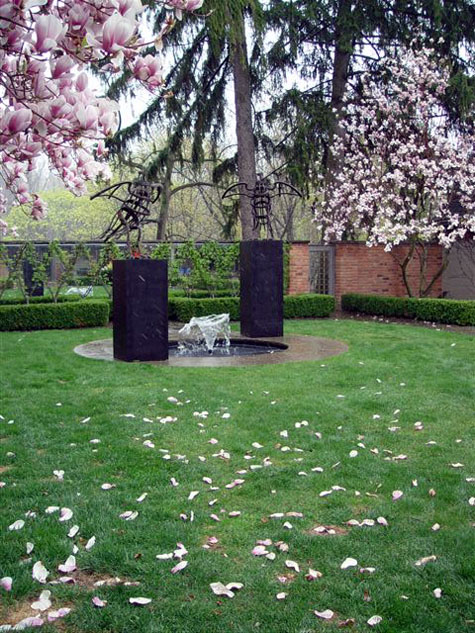Every spring, I swing by my Mom’s house last house. She died in 2002-so yes, this yearly visit is a pilgrimage of sorts. I had occasion to visit a regular client in the same neighborhood about what we would do this year, so I drove through the neighborhood. The landscape looks entirely different than when she owned it, save for an old record breaking size paperbark maple on the left side of this photograph. She grew this tree from a twig start from Musser Forest (do I have the name right?)-I am guessing better than 25 years ago. Paper bark maples are highly esteemd for their shaggy, cinnamon colored bark. Why am I talking about it? The girl that grew this maple taught me how to garden-and to love trees.
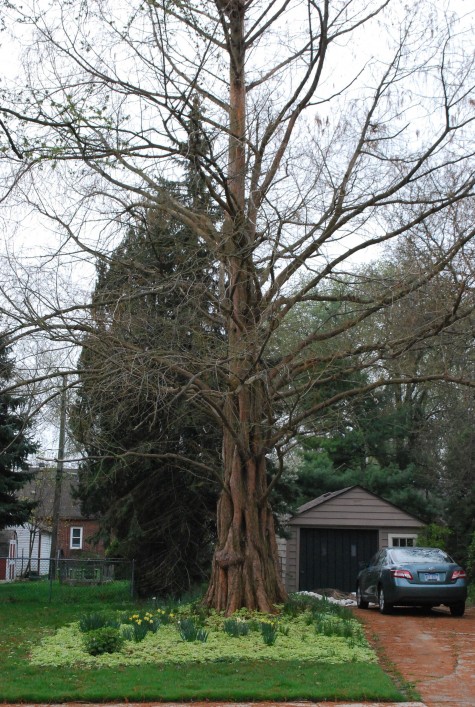 This dawn redwood down the street from my Mom’s old house is an astonishing tree. It is thriving in an urban neighborhood, just a few feet from a driveway. The driveway of a gardening person, I might add-the yard always looks well cared for. In my twenties, I loved visiting this tree before or after I visited my Mom. Sometimes we would walk down the street to look at it together. Forty years later it is still well worth the visit. The woody trunk and branches are beautifully sculptural.
This dawn redwood down the street from my Mom’s old house is an astonishing tree. It is thriving in an urban neighborhood, just a few feet from a driveway. The driveway of a gardening person, I might add-the yard always looks well cared for. In my twenties, I loved visiting this tree before or after I visited my Mom. Sometimes we would walk down the street to look at it together. Forty years later it is still well worth the visit. The woody trunk and branches are beautifully sculptural.
As for ornamental, or smaller growing flowering trees-what do you make of them? Some years, I cannot get enough of them. That cloud of spring pink is intoxicating. The cherries, apples and crabapples have thousands of small blooms that flutter in the slighest breeze. They can also be swept away in an afternoon, if the wind is strong enough. They bring ballerinas and tutus to mind. The flowers are just plain pretty, and that is sufficient reason to grow them. Maybe more importantly, those blooms are seductive. They may encourage a not so gardening minded individual to actually purchase and plant a tree. Who knows where that could lead. A few years later, perhaps they might be planting katsuras, or weeping Japanese white pines. I love them the most for this reason.
 A neighborhood street lined with Bradford pears is a good spring look. This is a large growing ornamental tree whose fruit is small, and better suited for birds than people. Bradford pears are highly susceptible to wind and storm damage. Plant a good cultivar, such as Cleveland Select, and give it room. They are not so broad, but they may grow as tall as 60 feet.
A neighborhood street lined with Bradford pears is a good spring look. This is a large growing ornamental tree whose fruit is small, and better suited for birds than people. Bradford pears are highly susceptible to wind and storm damage. Plant a good cultivar, such as Cleveland Select, and give it room. They are not so broad, but they may grow as tall as 60 feet.
I have no idea what this pink flowering tree is, but it is certainly exuberant, blooming in front of a red shingle house. I like the nerve of this. It takes the edge of of all of that sugary sweetness. Some years, flowering trees strike me as silly. Somehow a petunia handles being pink much better than a tree. All that frou frou and fluff, on a tree, for heaven’s sake. But the fairy tale part of the tree is very short lived. The bloom span might be two weeks, in the longest and best spring ever.
Every last bud on my 8 Butterflies magnolias frosted off a few nights ago. I imagine this tree in my Mom’s neighborhood suffered likewise. Magnolias are much more dramatic in bloom than cherries or crabs. The individual flowers are much larger. In the years when the flowers frost, there is a whole season ahead in which to enjoy a tree that has beautiful bark, leaves and attractive structure.
This dark foliaged crabapple lives in the traffic island across the street from my shop-I can see it out my office window. Every year it virtually defoliates by late summer-usually from drought and fungus. Once in a white we will clean up around the base, and prune. But every year in the spring it is a happening. This showgirl has a heart of steel.
This is a fairly large tree-I have no idea what it is. It’s the wrong shape for a Bradford, and it looks too symmetrical to be an apple. But it is breathtaking in bloom, whatever it is.
Weeping trees leave me cold. But I rather like how this tree is trimmed on the bottom. And it certainly is willing to bloom. Such a stark landscape for such a tree with such a romantic air.
My favorite part of small growing flowering trees? They lend themselves to being planted in groves, blocks, or swirls. They are quite comfortable being the star of a show. The flowering branches are great in a vase. All this pink? Just a little fleeting frosting.
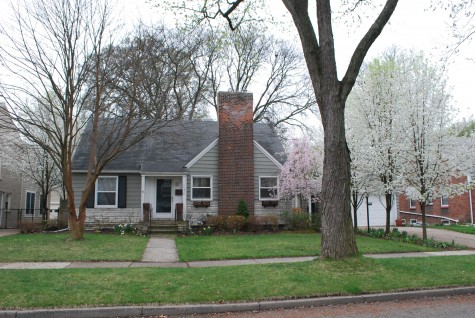
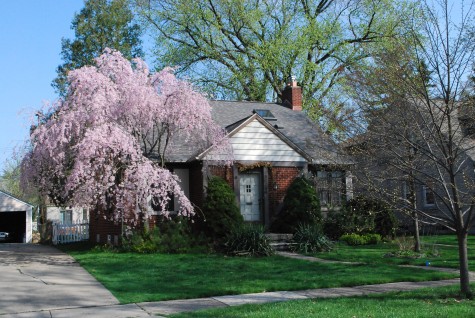



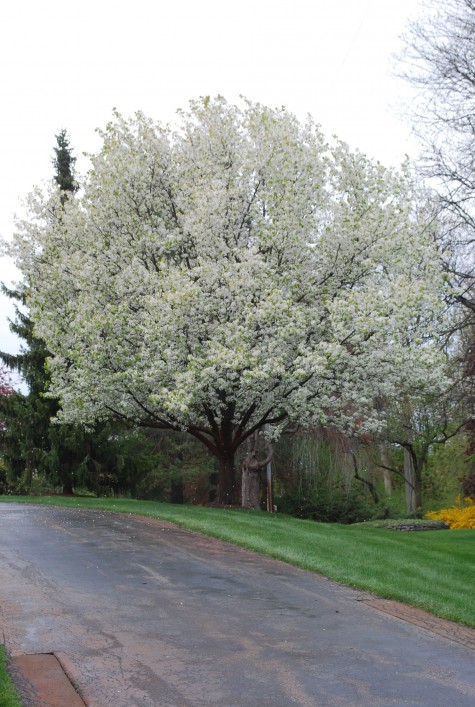
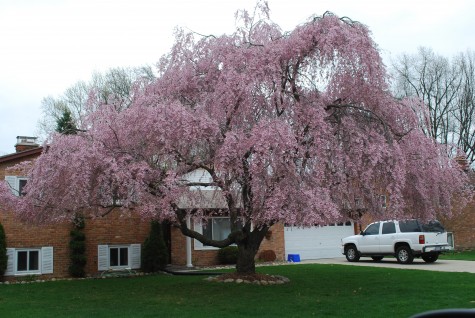
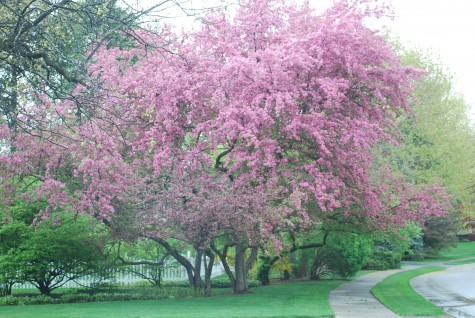
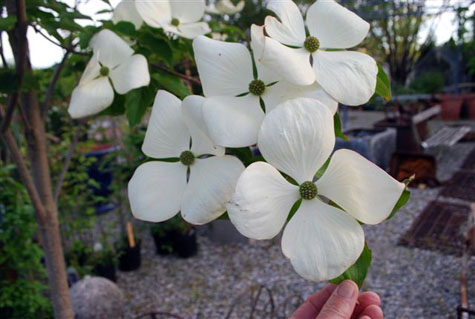
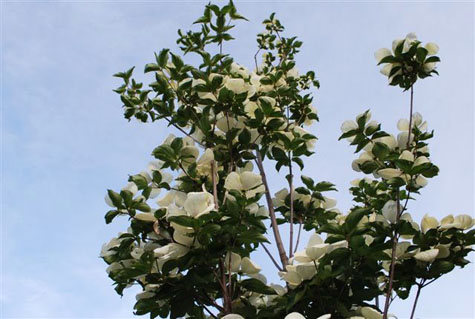
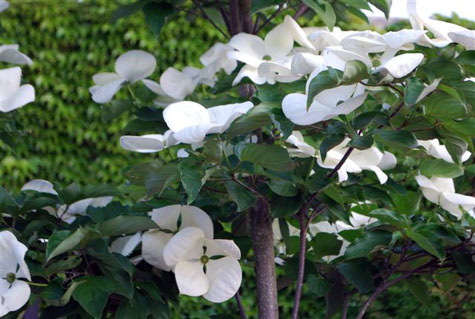
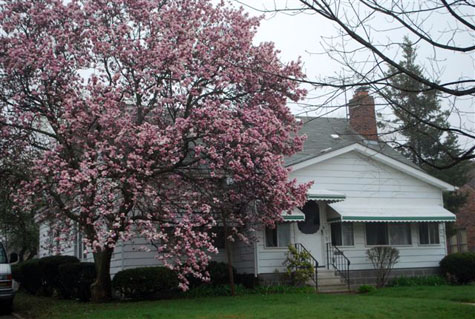 Everyone makes decisions about a life’s work. Whether they think it through, or not, decisions get made. As a landscape designer, I realized part of my life’s work was to plant magnolias-all manner of magnolias, every where it made good design sense to plant them. I am a designer who in part came to design via a love for plants. Plants are part of the vocabulary that helps give voice to a point of view. Every designer needs heart, soul, and nerve-but they also need language.
Everyone makes decisions about a life’s work. Whether they think it through, or not, decisions get made. As a landscape designer, I realized part of my life’s work was to plant magnolias-all manner of magnolias, every where it made good design sense to plant them. I am a designer who in part came to design via a love for plants. Plants are part of the vocabulary that helps give voice to a point of view. Every designer needs heart, soul, and nerve-but they also need language.
 Phil Savage, lived on almost 8 acres-most of which reflects a lifetime growing and hybridizing magnolias. He also grafted magnolia cuttings onto ash tree root stock-these trees are 70 feet tall on his property, as we speak. He hybridized “Yellow Butterflies”; when the spring weather is perfect, it is a dream come true in bloom. Later, it is sturdily and robustly green. His property had magnolias of a size, with flowers in colors, I have never seen-yellow, peach, orangy pink. It was like a visit to another planet. But no, just a visit to a man who knew and lived his life’s work.
Phil Savage, lived on almost 8 acres-most of which reflects a lifetime growing and hybridizing magnolias. He also grafted magnolia cuttings onto ash tree root stock-these trees are 70 feet tall on his property, as we speak. He hybridized “Yellow Butterflies”; when the spring weather is perfect, it is a dream come true in bloom. Later, it is sturdily and robustly green. His property had magnolias of a size, with flowers in colors, I have never seen-yellow, peach, orangy pink. It was like a visit to another planet. But no, just a visit to a man who knew and lived his life’s work.
